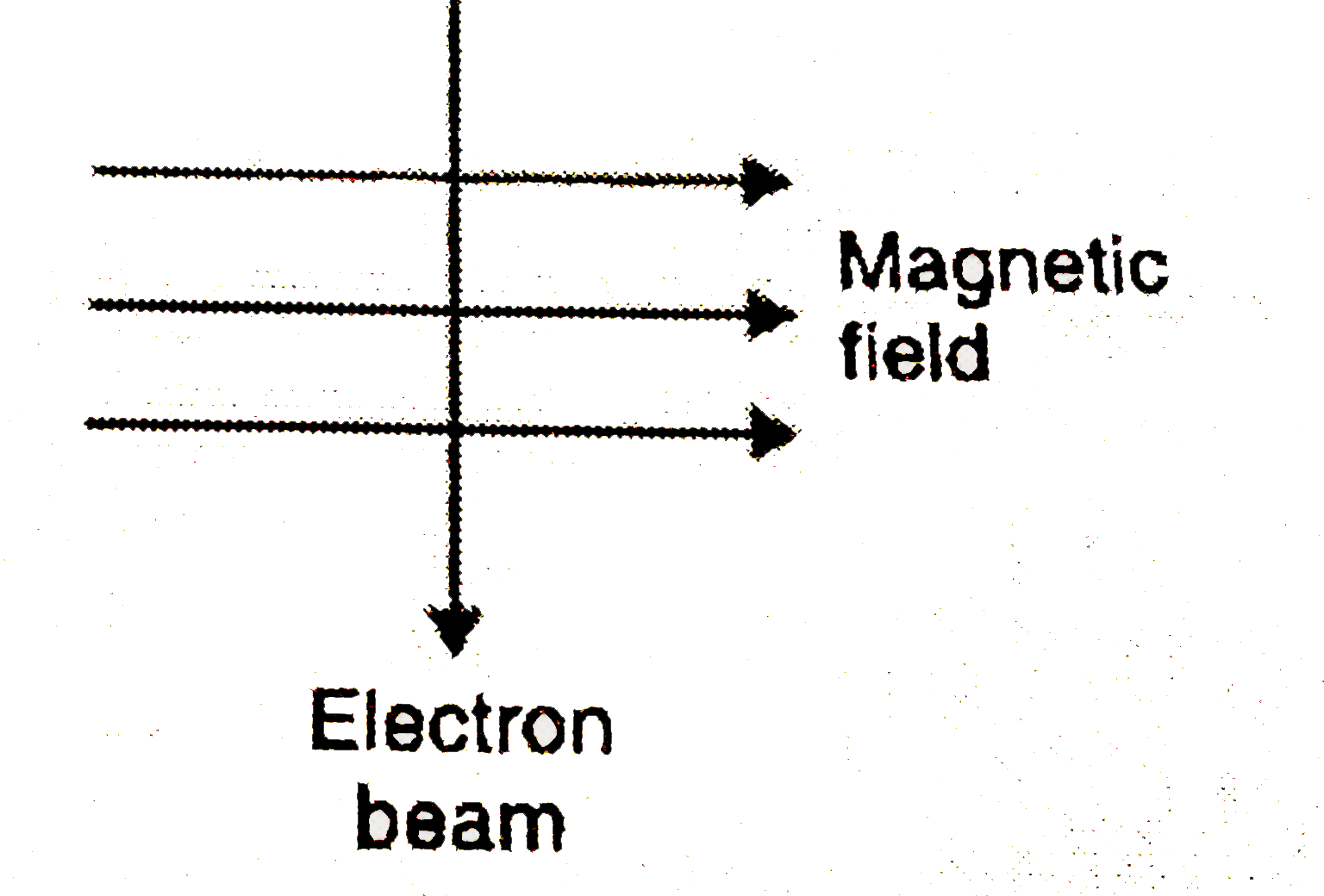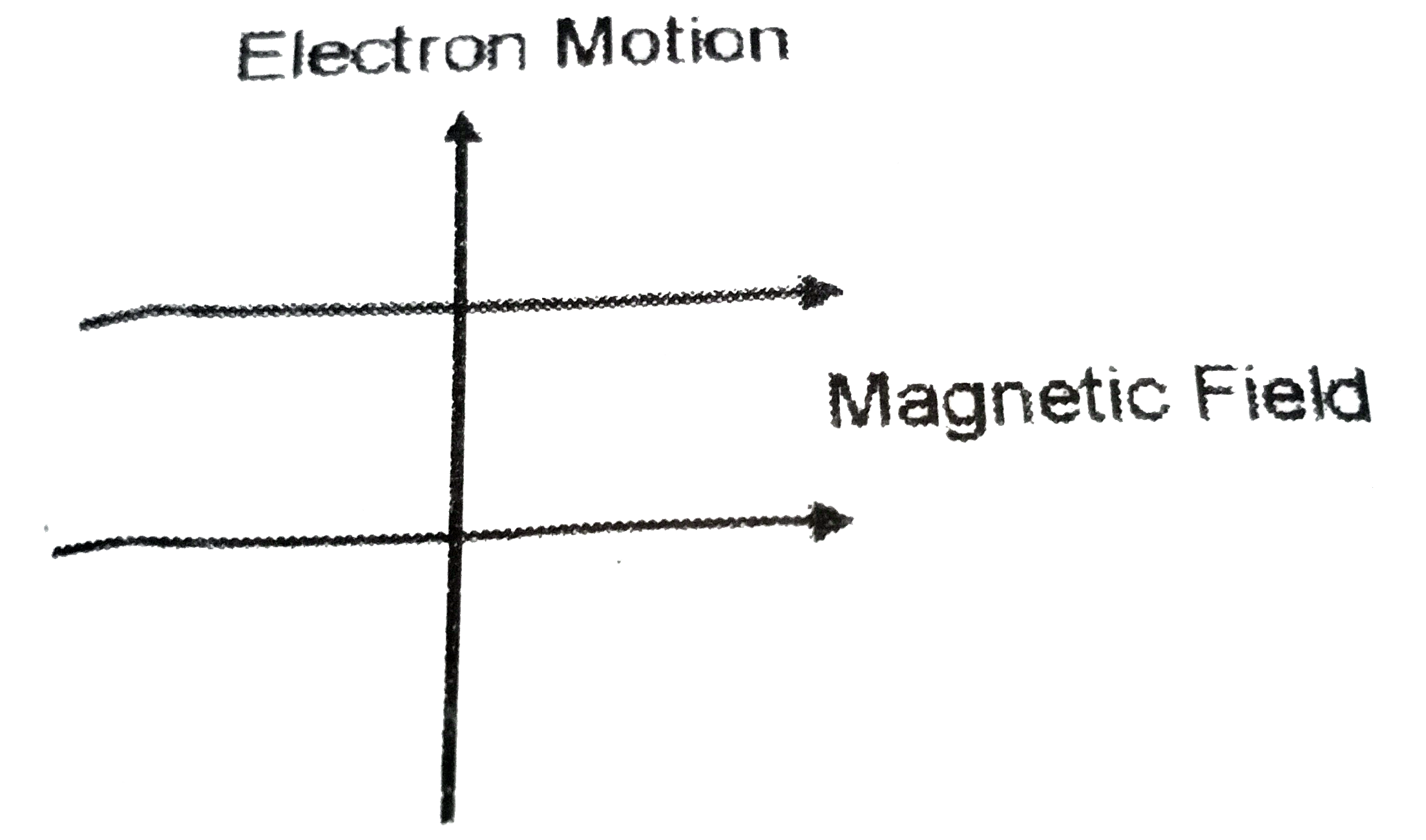An electron enters a magnetic field at right angles
to it as shown in fig. The direction of the force acting on the electron will be :
(a) To the right , (b) to the left , (c) out of the page,
(d) into the page.

When a force conductor carrying current is placed perpendicular to the direction of magnetic field, the magnetic field acting on it is given by Fleming.s left hand rule. Since the directiorn of current is the same as that of the motion of a positive charge, the direction of force acting on it when movin8 perpendicular to the direction of magnetic field is the same as that acting on a current-carrying conductor placed perpendicular to the direction of magnetic field. Obviously, the force acting on an electron is opposite to that. Therefore in this case it is into the page.
Topper's Solved these Questions
- BOOK - OSWAAL PUBLICATIONCHAPTER - MAGNETIC EFFECTS OF ELECTRIC CURRENTEXERCISE - TOPIC-2 (LONG ANSWER TYPE QUESTIONS )16videos
MAGNETIC EFFECTS OF ELECTRIC CURRENT
- BOOK - OSWAAL PUBLICATIONCHAPTER - MAGNETIC EFFECTS OF ELECTRIC CURRENTEXERCISE - NCERT CORNER (INTEXT QUESTIONS )19videos
MAGNETIC EFFECTS OF ELECTRIC CURRENT
- BOOK - OSWAAL PUBLICATIONCHAPTER - MAGNETIC EFFECTS OF ELECTRIC CURRENTEXERCISE - TOPIC-2 (SHORT ANSWER TYPE QUESTIONS - I)7videos
MAGNETIC EFFECTS OF ELECTRIC CURRENT
- BOOK - OSWAAL PUBLICATIONCHAPTER - LIGHT-REFLECTION AND REFRACTIONEXERCISE - NCERT CORNER (TEXTBOOK EXERCISES)15videos
LIGHT-REFLECTION AND REFRACTION
- BOOK - OSWAAL PUBLICATIONCHAPTER - SOURCES OF ENERGYEXERCISE - NCERT CORNER (TEXTBOOK EXERCISES)10videos
SOURCES OF ENERGY
Similar Questions
Knowledge Check
- Question 1 - Select One
An electron beam enters a magnetic field right angles to it as shown in the Figure.

The direction of force acting on the electron beam will be :Ato the leftBto the rightCinto the pageDout of the page - Question 2 - Select One
An electron and a proton enter a magnetic field at right angles to the field with the same kinetic energy
AThe trajectory of the electron will be less curvedBThe trajectory of the proton will be less curvedCBoth the trajectory electron will be equally curvedDBoth will move along straight line paths - Question 3 - Select One
An electron and a proton enter a magnetic field at right angles to the field with the same kinetic energy
Athe electron trajectory will be less curved than the proton trajectoryBthe proton trajectory will be less curved than the electron trajectoryCboth trajectories will be equally curvedDboth particles move in straight lines
The direction of magnetic force on the electron as shown in the diagram is along
 .View Solution
.View SolutionAn electron moving towards the east enters a magnetic field directed towards the north. The force on the electron will be directed
View SolutionAn electron having a charge c moves with a velocity v in X - direction . An electric field acts on it in Y - direction ? The force on the electron acts in
View SolutionAn electron enters a region that contains a magnetic field directed into the page as shown. The velocity vector of the electron makes an angle of 30∘ with the +y axis. What is the direction of the magnetic force on the electron when it enters the field ?
 View Solution
View SolutionAn electron (charge q coulomb) enters a magnetic field of Hweber/m2 with a velocity of vm/s in the same direction as that of the field the force on the electron is
View Solution

